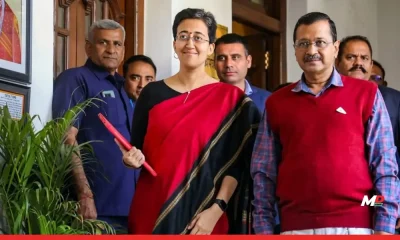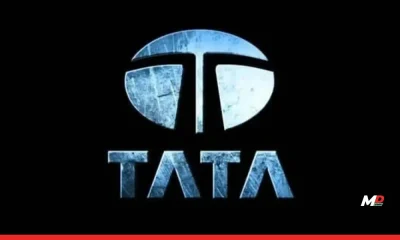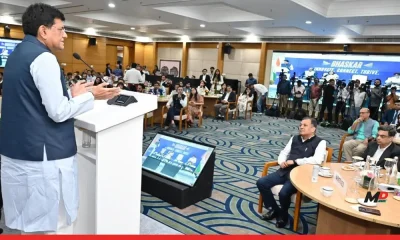Business
World Youth Skills Day: India’s Path to a Skilled Future

As the world celebrates World Youth Skills Day on July 15, India stands at a crucial juncture in its journey towards becoming a global skills hub. With one of the world’s largest youth populations, the country faces both immense opportunities and significant challenges in equipping its workforce for the future. This year’s observance takes on added significance as nations worldwide grapple with the economic aftermath of the COVID-19 pandemic and the accelerated pace of technological change.
India’s Demographic Dividend: A Double-Edged Sword
India’s young population presents a potential demographic dividend, with over 62% of the population in the working age group (15-59 years). This vast workforce, if properly skilled, could drive India’s economic growth and position the country as a global leader in various sectors. However, harnessing this potential requires a focused and dynamic approach to skills development.
The challenge lies not just in providing basic education, but in equipping youth with market-relevant skills that can adapt to the rapidly evolving job market. Without proper intervention, this demographic dividend risks becoming a demographic liability, potentially leading to widespread unemployment and social unrest.
Government Initiatives: Paving the Way for a Skilled India
Recognizing the urgency of the situation, the Indian government has launched several ambitious initiatives to address the skills gap:
1. Skill India Mission: Launched in 2015, this flagship program aims to train over 400 million people in various skills by 2022.
2. Pradhan Mantri Kaushal Vikas Yojana (PMKVY): This scheme provides free skill training to youth, coupled with monetary rewards for successful completion of certified skill courses.
3. National Apprenticeship Promotion Scheme: This initiative promotes on-the-job training, bridging the gap between theoretical knowledge and practical application.
These programs, along with others like the National Skill Development Corporation (NSDC) and various sector skill councils, aim to create a comprehensive ecosystem for skills development in India.
Challenges on the Path to a Skilled Workforce
Despite the government’s efforts, several challenges persist:
1. Skills Mismatch: There’s often a disconnect between the skills taught and those required by the industry, leading to unemployability among graduates.
2. Rapid Technological Evolution: The pace of technological change, especially with the advent of AI and automation, necessitates continuous upskilling and reskilling.
3. Rural-Urban Divide: Access to quality skill training remains limited in rural areas, creating a geographical skills imbalance.
4. Informal Sector Dominance: A large portion of India’s workforce is employed in the informal sector, making structured skill development challenging.
5. Social Stigma: Vocational education often carries a social stigma, with academic degrees still being preferred over skill-based certifications.
The Road Ahead: Securing India’s Position as a Global Skills Hub
To transform these challenges into opportunities and secure its position as a provider of skilled workforce globally, India must adopt a multi-pronged approach:
1. Industry 4.0 Alignment: Skill development programs must be continuously updated to align with the requirements of Industry 4.0, including proficiency in emerging technologies like AI, IoT, and data analytics.
2. Strengthening Industry-Academia Partnerships: Closer collaboration between educational institutions and industries can ensure that curricula remain relevant and students gain practical exposure.
3. Soft Skills Focus: Along with technical skills, there needs to be an increased emphasis on soft skills such as communication, teamwork, and adaptability, which are crucial in the modern workplace.
4. Promoting Entrepreneurship and Innovation: Skill development should not just create job-seekers but job-creators. Encouraging entrepreneurship can help absorb the growing workforce.
5. Leveraging Technology for Skill Development: The use of digital platforms, virtual reality, and mobile learning can democratize access to quality skill training, especially in remote areas.
6. International Collaborations: Partnering with countries advanced in vocational education, like Germany or Japan, can help in adopting global best practices.
7. Recognition of Prior Learning: Implementing robust systems to recognize and certify skills acquired informally can bring a large section of the workforce into the formal skilling ecosystem.
As India celebrates World Youth Skills Day, the focus remains on creating a robust and adaptive ecosystem that empowers its youth with the skills needed for the jobs of tomorrow. The success of India’s skilling initiatives will not only drive its economic growth and global competitiveness but also serve as a model for other developing nations facing similar demographic challenges.
The road ahead is long and complex, but with concerted efforts from the government, industry, academia, and the youth themselves, India can transform its vast human resource into a skilled workforce ready to meet the challenges of the 21st century and beyond.














